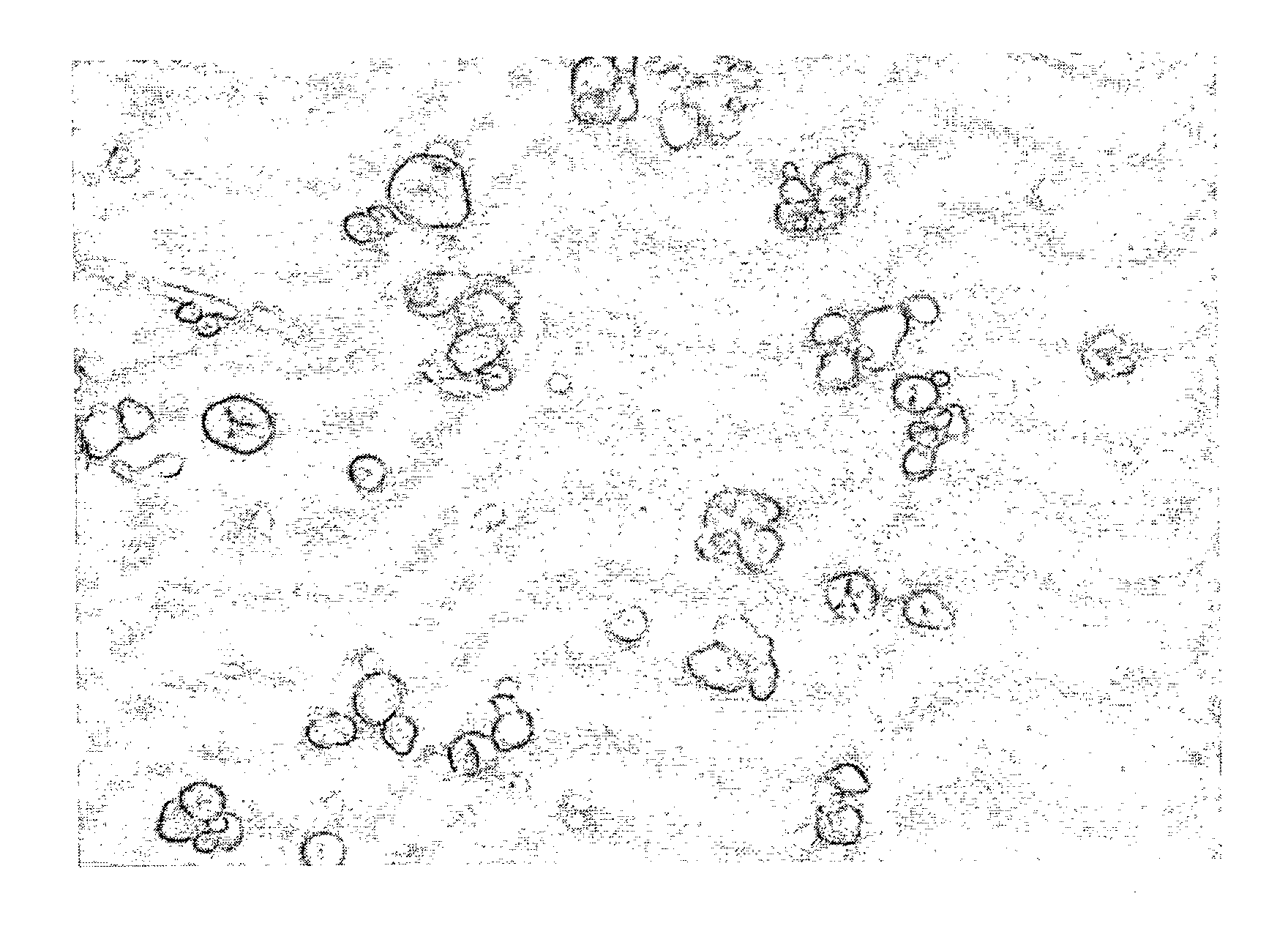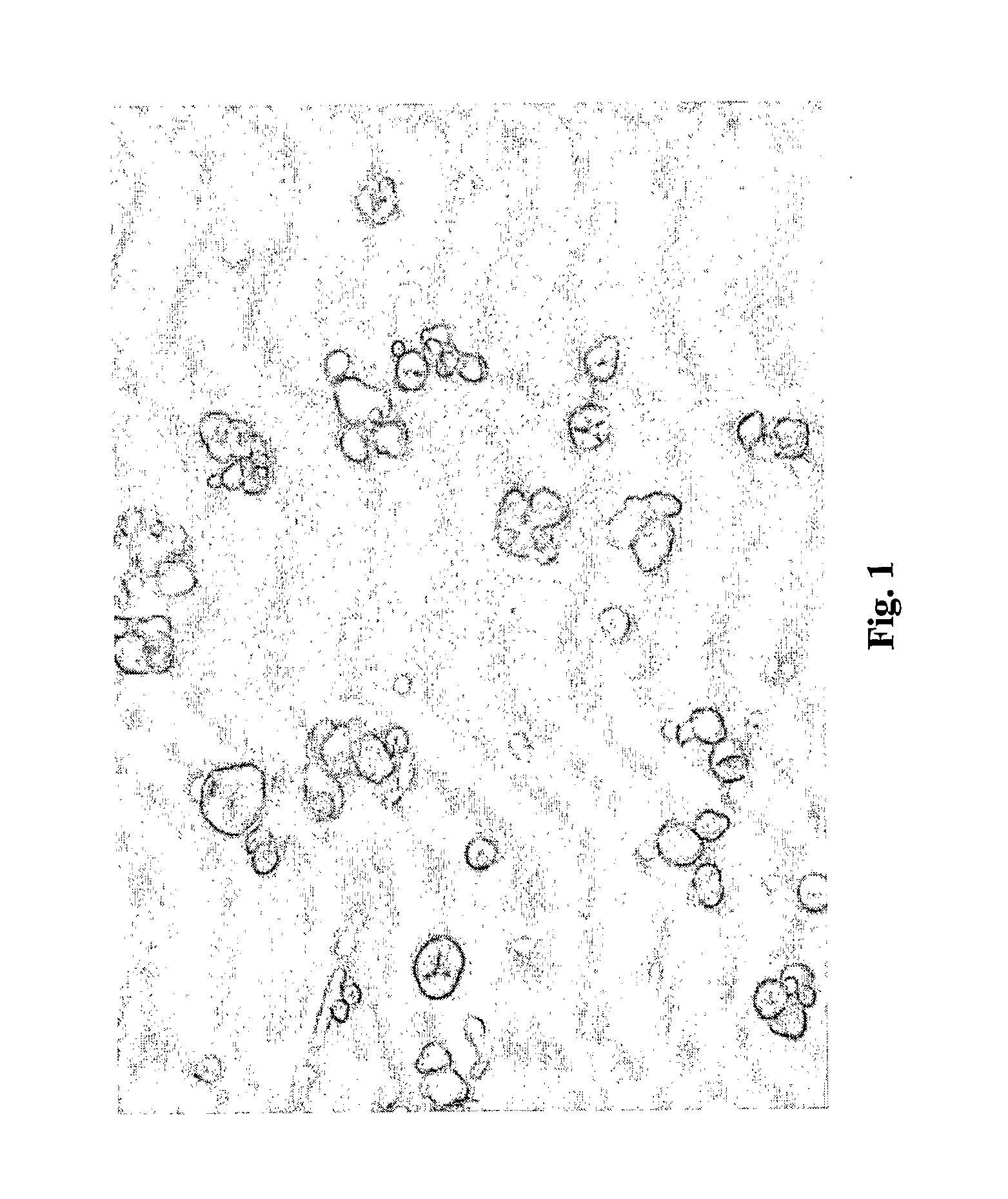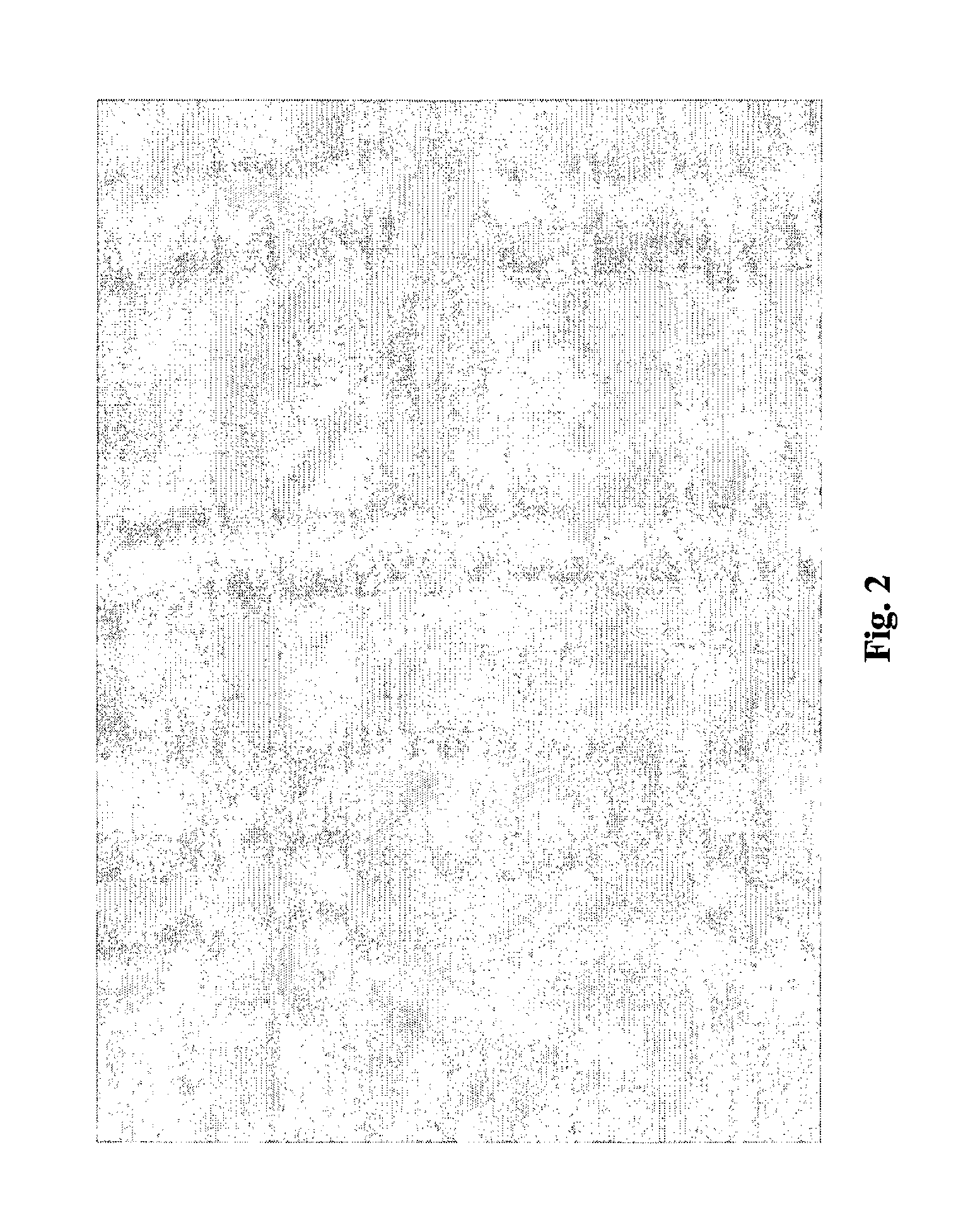Microparticles for Oral Delivery
- Summary
- Abstract
- Description
- Claims
- Application Information
AI Technical Summary
Benefits of technology
Problems solved by technology
Method used
Image
Examples
example 1
Preparation of High Amylose Starch Phospholipid and Alginate Complex Slurry
[0132] Two grams of high amylose starch (HYLON™ VII, National Starch and Chemical, Bridgewater, N.J.) is dissolved in 96 milliliters of 1% sodium hydroxide at 50 degrees Celsius. One gram of powdered egg lecithin (Archer-Daniels-Midland Co., Decatur, Ill.) or liquid soy lecithin is added to the alkali slurry and allowed to dissolve the hydrated starch granules and to complex with the amylose polymers for 30 minutes. The alkali complex slurry is then neutralized to pH 7.5 with hydrochloric or acetic acid, 1 gram alginate (PRIME ALGIN™ T-500, Multi-Kem Corp., Raidefield N.J.) dissolved into the slurry and cooled to room temperature. The slurry is now ready for the addition of oil or oil associated bioactive agents and to be cross-linked to calcium ions. The composition of the complex slurry is provided in Table 1.
TABLE 1Slurry composition (grams dry weight per 100 grams)High amylose (70% amylose)2Egg / soy lec...
example 2
[0133] Fish Oil-Containing Microbeads
[0134] 1000 milliliters of complex slurry is prepared according to Example 1 and 200 grams of fructose (the Estee Company garden city, NY) and (400 grams) of fish oil was mixed into the solution. The fish oil contained 200 parts per million of tertiary butylhydroquinone (TBHQ) and 1,000 parts per million of tocopherols and / or 0.5% rosemary oil. The preferred fish oil is refined and deodorized and contains a high quantity of omega-3 fatty acids. The fish oil of the present invention may be produced from any suitable source, including sardines, herring, capelin, anchovy, cod liver, salmon, tuna, and mixtures thereof. Acceptable particles have also been prepared in the absence of fructose.
[0135] To mask any fishy flavor and smell, sensory masking agents such as vanillin or natural and artificial fruit or mint flavors such as lime, lemon, orange, pineapple, grapefruit, spearmint, peppermint, benzaldehyde, and cherry, may be included at this stage. ...
example 3
A Yogurt Food Product Containing Microbeads
[0142] Microbeads containing algal oil were prepared according to Examples 1 and 2 except that the fish oil was replaced with 400 grams of algal source DHA oil (DHASCO™, Martek, Columbia Md.). The resulting wet beads will be 40% by weight oil and about 20% by weight DHA. A yogurt composition is prepared by admixing 100 grams of DANNON™ brand plain, low fat yogurt with 2.5 grams of the above microbeads. The final yogurt product contains 400 milligrams of DHA per 100 grams yogurt and has no evidence of fishy odor or flavor.
PUM
| Property | Measurement | Unit |
|---|---|---|
| Fraction | aaaaa | aaaaa |
| Fraction | aaaaa | aaaaa |
| Fraction | aaaaa | aaaaa |
Abstract
Description
Claims
Application Information
 Login to View More
Login to View More - R&D
- Intellectual Property
- Life Sciences
- Materials
- Tech Scout
- Unparalleled Data Quality
- Higher Quality Content
- 60% Fewer Hallucinations
Browse by: Latest US Patents, China's latest patents, Technical Efficacy Thesaurus, Application Domain, Technology Topic, Popular Technical Reports.
© 2025 PatSnap. All rights reserved.Legal|Privacy policy|Modern Slavery Act Transparency Statement|Sitemap|About US| Contact US: help@patsnap.com



